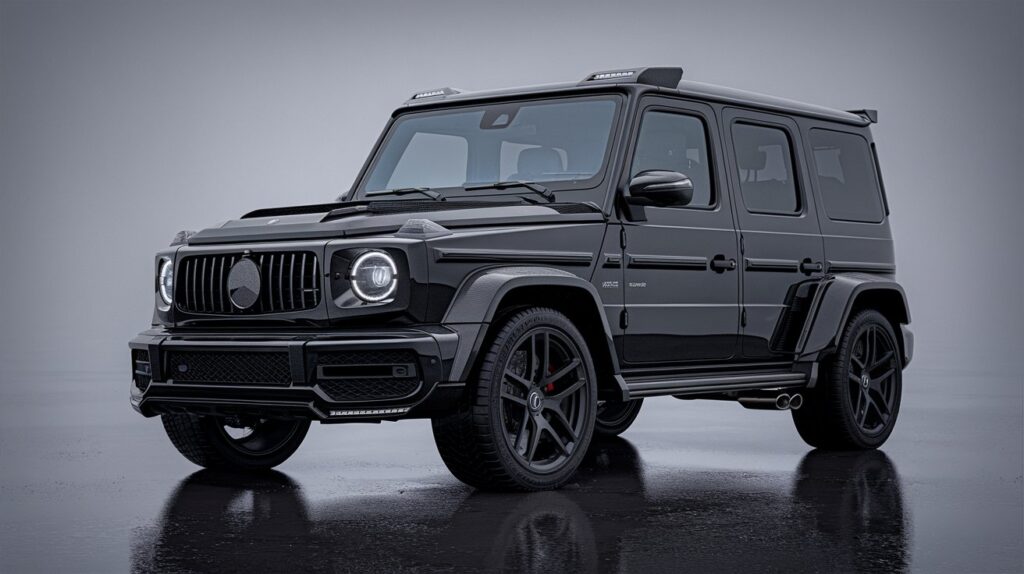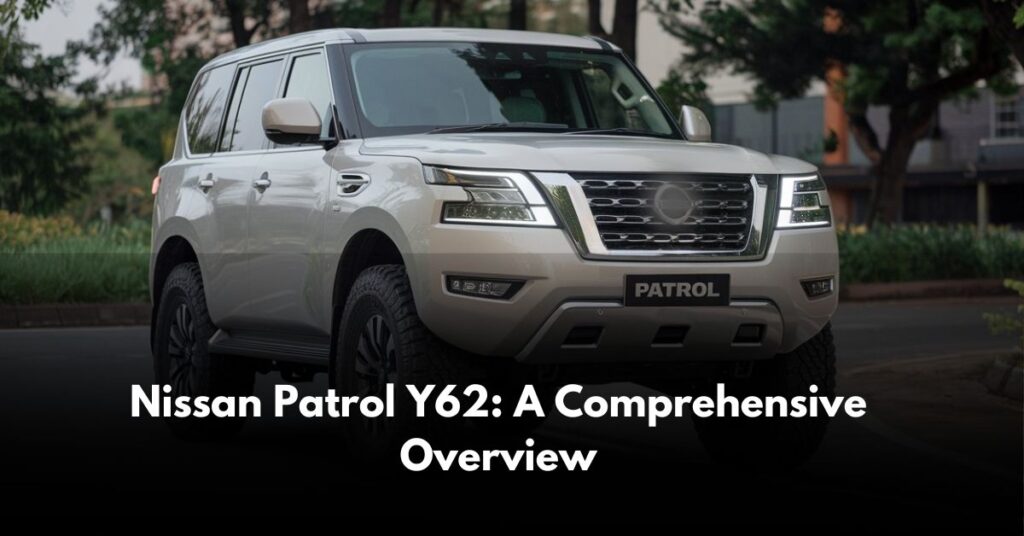A Fresh Chapter for Škoda’s Flagship SUV
The second-generation Škoda Kodiaq has finally arrived, and it’s clear the Czech automaker has been paying attention to family SUV buyers’ evolving needs. Launched in late 2024 for the 2025 model year, this completely redesigned seven-seater represents Škoda’s most ambitious attempt yet to blend practicality, technology, and efficiency in the competitive midsize SUV segment.
After spending a week with the new Kodiaq on varied terrain—from urban commutes to challenging country roads—what stands out most isn’t just its increased dimensions or modernized appearance, but how thoughtfully each element has been reimagined. This isn’t merely a facelift but a comprehensive rethinking of what a family SUV can offer in today’s increasingly electrified automotive landscape.
The headline innovation is undoubtedly the introduction of the brand’s first plug-in hybrid powertrain for the Kodiaq, delivering up to 100 km of electric-only range—a game-changer for the daily school run and commute. But there’s far more to this package than just its electrification, with thoughtful interior innovations, enhanced connectivity features, and advanced driver assistance systems that elevate the Kodiaq beyond its honest, utilitarian predecessor.
With a starting price that positions it competitively against rivals like the Kia Sorento, Hyundai Santa Fe, and even premium contenders like the Volkswagen Tiguan Allspace, the 2025 Kodiaq makes a compelling case for families seeking versatility without compromise. Let’s examine whether Škoda’s flagship SUV delivers on its promises.
Table of Contents
Design and Exterior: Evolution with Purpose
Modern Aesthetics with Practical Benefits
The 2025 Kodiaq maintains Škoda’s characteristically understated design philosophy while incorporating the brand’s latest visual language. At first glance, the changes might seem subtle—an evolution rather than revolution—but spend time examining the details, and the comprehensive nature of this redesign becomes apparent.
The front end now features Škoda’s revised corporate face with slimmer, bi-LED headlights as standard (with matrix LED technology optional) flanking a more prominent, upright grille. The new split-light design gives the Kodiaq a more contemporary presence on the road while improving nighttime visibility. The sculpted hood and sharpened character lines create a more assertive stance than its predecessor, without veering into aggressive territory.
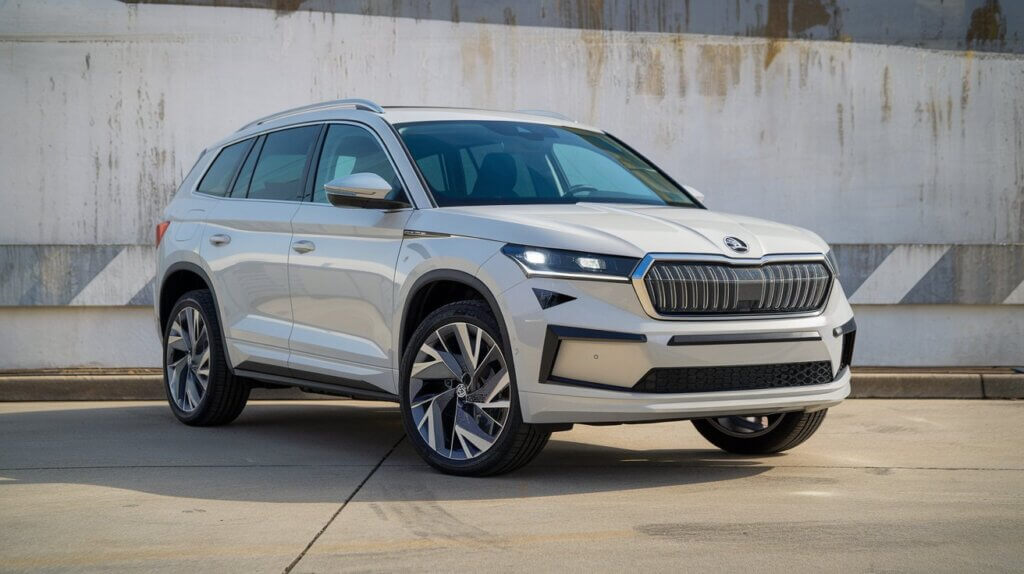
In profile, the Kodiaq’s increased dimensions become evident—it’s now 61mm longer (4,758mm total) and marginally wider than the outgoing model. This growth directly translates to improved interior space, particularly noticeable in the third row and cargo area. The extended wheelbase creates more balanced proportions, making this larger SUV appear paradoxically more athletic.
The rear features redesigned LED taillights with Škoda’s signature crystalline detailing, connected by a light bar that emphasizes the vehicle’s width. The tailgate opening has been widened and lowered for easier loading—a small but significant improvement for families regularly battling with groceries, strollers, and sports equipment.
Wheel options range from 17-inch to 20-inch alloys depending on trim level, with the larger options filling the arches impressively without compromising ride comfort—a tricky balance Škoda’s engineers have managed admirably.
Distinctive Features and Practical Solutions
True to Škoda’s “Simply Clever” philosophy, the new Kodiaq incorporates numerous thoughtful exterior features. Door edge protectors deploy automatically when opening doors to prevent parking lot dings. The integrated windscreen washer fluid reservoir now fills through the fuel filler flap, eliminating the need to open the hood during routine maintenance.
The available hands-free power tailgate with virtual pedal proves genuinely useful when approaching the vehicle with arms full, while integrated roof rails accommodate various accessory attachments without aftermarket modifications.
Perhaps most interesting for all-weather adventurers is the new “Sleep Package” option, which transforms the Kodiaq into a micro-camper with specialized window blinds, blankets, and interior reconfiguration options for occasional overnight stays—an example of how Škoda is recognizing and catering to evolving usage patterns among outdoor-oriented families.
Interior and Comfort: Space Meets Sophistication
Roomier Than Ever
Step inside the 2025 Kodiaq, and the benefits of its expanded exterior dimensions become immediately apparent. Škoda claims an additional 15mm of elbow room up front, 6mm more headroom in the second row, and crucially, substantially improved third-row accommodations that now comfortably seat average-sized adults for medium-duration journeys.
The most impressive dimensional improvement relates to cargo capacity. With all seats in place, luggage space has increased to 340 liters (up from 270), expanding to 845 liters with the third row folded, and a cavernous 2,035 liters with both rear rows flat. This represents class-leading storage efficiency and directly addresses a primary concern for large families considering seven-seat SUVs.
Premium Ambiance Without Premium Pricing
Material quality has taken a significant step forward. While the previous Kodiaq offered respectable finishes, the new model introduces soft-touch surfaces across all frequent contact points, with convincing brushed metallic accents and ambient lighting creating a genuinely upscale environment.
Upper trim levels feature recycled microfiber seat upholstery that both looks and feels premium while addressing sustainability concerns—a thoughtful touch that aligns with the vehicle’s eco-conscious hybrid technology. Leather options remain available for traditionalists, but the microfiber represents the more forward-thinking choice.
As seen in the latest 2025 Škoda Superb review, the front seats deserve particular praise. Even the standard units offer excellent long-distance comfort with proper thigh and lumbar support, while the optional ErgoComfort seats with massage and ventilation functions elevate the experience to near-luxury standards.
Second-row seats now slide and recline individually, allowing for customized configurations depending on passenger and cargo needs. The third row remains best suited for children or occasional adult use, but the improvements make these seats substantially more viable than in the previous generation.
Tech-Forward Dashboard and Controls
The dashboard architecture embraces digital technology while maintaining physical controls where they make ergonomic sense. Twin screens dominate—a 10-inch digital driver display comes standard, with a larger 13-inch version available on higher trims, paired with a central 13-inch infotainment touchscreen angled toward the driver.
Notably, Škoda has resisted the temptation to eliminate all physical controls. Climate functions retain dedicated buttons and knobs, as do key driver assistance features—a practical approach that allows for eyes-on-the-road adjustments. The new multifunction steering wheel provides intuitive access to frequently used functions without unnecessary complexity.
Storage solutions abound, from the sizeable glovebox and center console to door pockets capable of holding 1.5-liter bottles. Wireless charging pads accommodate multiple devices simultaneously, while USB-C ports are distributed throughout all three rows—a small but crucial detail for family harmony on longer journeys.
Performance and Driving Dynamics: Efficient Power
Powertrain Options for Every Need
The 2025 Kodiaq launches with a comprehensive powertrain lineup tailored to different priorities and markets:
The headline addition is the new plug-in hybrid variant, combining a 1.5-liter TSI gasoline engine with an electric motor to produce a combined 204 horsepower. This setup enables approximately 100 km of electric-only driving—enough to cover most daily commutes without engaging the combustion engine. The 25.7 kWh battery supports DC fast charging at up to 50 kW, allowing an 80% charge in approximately 25 minutes.
Traditional internal combustion options include:
- 1.5-liter TSI gasoline with 148 hp (front-wheel drive)
- 2.0-liter TSI gasoline with 201 hp (all-wheel drive)
- 2.0-liter TDI diesel with 148 hp or 191 hp (front or all-wheel drive)
All engines come paired with a seven-speed DSG dual-clutch automatic transmission, with no manual option available—a reflection of shifting market preferences and efficiency optimization.
Performance Metrics
The plug-in hybrid delivers surprisingly spirited performance, reaching 100 km/h in 7.6 seconds despite its efficiency focus. The range-topping 2.0 TSI gasoline variant is marginally quicker at 7.3 seconds, while the most powerful diesel achieves the sprint in 7.8 seconds.
Top speeds range from 200 km/h for the base models to 220 km/h for the more powerful variants—more than adequate for any legal driving scenario. More relevant to daily use, the mid-range acceleration from 80-120 km/h (for overtaking) impresses across the range, with even the entry-level models completing this maneuver with confidence.
Fuel economy naturally varies significantly by powertrain. The plug-in hybrid achieves a remarkable combined consumption figure of 1.4 L/100km when starting with a charged battery, though this rises to approximately 6.5 L/100km once the battery depletes. The diesel variants return between 5.5-6.2 L/100km in mixed driving, while the gasoline models manage 7.2-8.5 L/100km depending on engine and drivetrain.
Chassis and Handling
Škoda has managed a delicate balancing act with the Kodiaq’s driving dynamics. Based on the evolved MQB platform, the SUV delivers stable, reassuring handling without attempting to masquerade as a sports car. The slightly increased ride height (now 189mm of ground clearance) provides useful capability on rough surfaces without compromising on-road stability.
Standard progressive steering delivers appropriate weighting and accuracy, becoming more direct as steering angle increases—useful both when parking and during more spirited driving on winding roads. All-wheel drive variants incorporate a new, sixth-generation Haldex coupling that distributes torque more quickly and predictively than before.
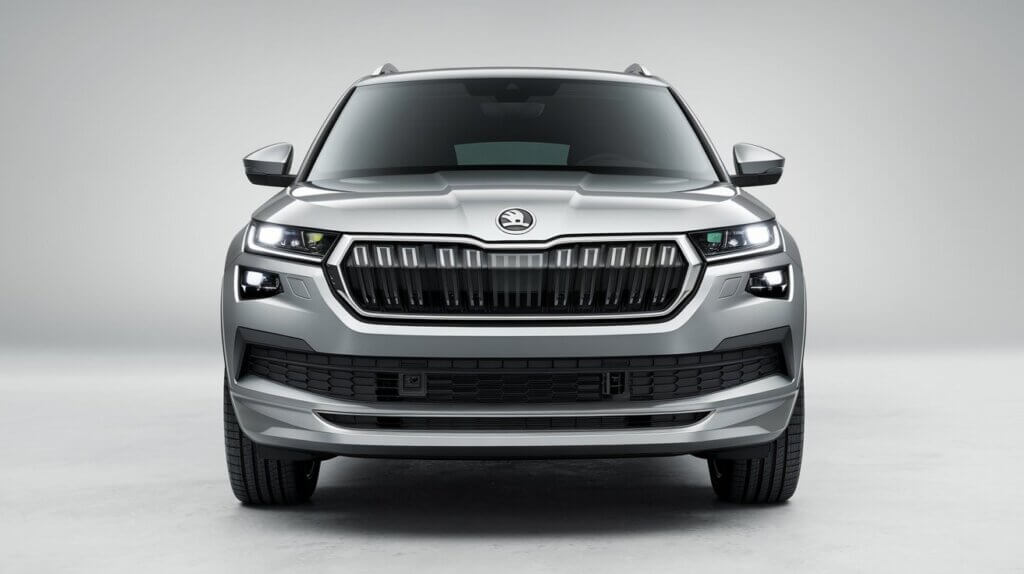
The optional Dynamic Chassis Control (DCC) with adaptive dampers proves worth the investment, allowing the Kodiaq to better manage the inherent compromises of a family SUV. In Comfort mode, the system effectively absorbs road imperfections while maintaining composure; Sport mode reduces body roll and sharpens responses without introducing harshness.
During challenging driving on wet, winding mountain roads, the Kodiaq remained composed and predictable, with electronic stability systems intervening discreetly when needed. While not overtly sporty in character, the handling inspires confidence—a more valuable trait in a vehicle designed primarily for family transport.
Technology and Features: Digitally Enhanced Family Travel
Infotainment and Connectivity
The centerpiece of the Kodiaq’s technology suite is the latest generation of Škoda’s infotainment system, displayed on a 13-inch touchscreen with crisp graphics and responsive performance. The interface has been redesigned with a more intuitive layout, featuring customizable tiles and improved voice control that now understands natural language commands.
Wireless Apple CarPlay and Android Auto come standard across the range, as does integrated navigation with real-time traffic updates. The system supports over-the-air updates, ensuring software improvements and new features can be delivered without dealer visits.
The available premium audio system, developed in partnership with Canton, delivers impressive sound quality through 12 strategically placed speakers. For media-hungry families, the optional rear-seat entertainment package adds two 10.1-inch touchscreens with independent content selection—a potential argument-averter on longer journeys.
Connectivity extends beyond entertainment to practical functions. The MyŠkoda app provides remote vehicle monitoring, pre-conditioning of the climate control system, charge scheduling for the plug-in hybrid, and location services—all valuable features for busy family life.
Driver Assistance and Safety Technology
Škoda has significantly expanded the Kodiaq’s driver assistance capabilities for 2025. Standard across the range is Travel Assist 2.5, which combines adaptive cruise control, lane keeping, and traffic sign recognition to reduce driver workload on longer journeys.
The system now incorporates predictive cruise control, which adjusts speed based on upcoming road conditions—automatically slowing for sharp curves or roundabouts before resuming the set speed afterward. This feature proves particularly valuable on unfamiliar routes, adding both safety and comfort.
Parking assistance has evolved to include Remote Park Assist, allowing the driver to maneuver the Kodiaq into tight spaces using the smartphone app while standing outside the vehicle—useful for narrow garages or tight parking spots. The 360-degree camera system provides excellent visibility with crisp, high-resolution images.
Safety features include up to nine airbags, autonomous emergency braking with pedestrian and cyclist detection, rear cross-traffic alert, and exit warning to prevent door opening when vehicles or cyclists are approaching from behind.
During testing, these systems functioned with minimal false alarms or intrusive interventions—a sign of mature calibration rather than rushed implementation. As noted in a comprehensive evaluation by Car and Driver, the assistance systems “strike an ideal balance between helpfulness and interference.”
Practicality and Versatility: The Family-First Philosophy
Storage Solutions and Clever Features
The Kodiaq has always emphasized practical features, and the 2025 model doubles down on this family-friendly approach. Beyond the expanded cargo capacity mentioned earlier, numerous thoughtful touches enhance everyday usability.
Each door pocket can accommodate a 1.5-liter bottle plus additional items. The refrigerated glovebox keeps snacks and drinks cool on summer journeys. The center console incorporates a removable waste bin—a simple but invaluable feature for families with young children.
Škoda’s signature umbrella storage (with integrated drainage) remains in the driver’s door, while new additions include tablet holders for second-row passengers and a phone pocket on the front seatbacks. The cargo area features multiple bag hooks, a removable LED flashlight, and configurable organizing elements.
Perhaps most impressive is the improved sleep package option, which transforms the interior into a surprisingly comfortable overnight accommodation for two adults. While not replacing a proper camper van, this feature adds genuine versatility for weekend adventurers or festival-goers without requiring a dedicated recreational vehicle.
Family-Friendly Design Elements
Beyond simple storage, the Kodiaq incorporates numerous features specifically designed for family use. Rear window sunblinds come integrated rather than as aftermarket additions. The optional power-operated child safety locks can be controlled from the driver’s position.
Second-row ISOFIX mounting points are now supplemented by additional anchor points in the third row on seven-seat models, allowing for proper child seat installation across more positions. The rear doors now open wider (to nearly 90 degrees), dramatically improving access when installing child seats or helping less mobile passengers.
As examined in an in-depth review by Edmunds, the Kodiaq “elevates family-friendly design beyond mere marketing to deliver genuinely useful innovations that address real-world pain points.”
Efficiency and Environmental Credentials: Embracing Electrification
Plug-in Hybrid Technology
The plug-in hybrid powertrain represents Škoda’s most significant technological leap with this generation Kodiaq. The system combines a 1.5-liter TSI gasoline engine with a 85kW electric motor integrated into the transmission housing, powered by a 25.7 kWh lithium-ion battery pack.
The resulting 204 horsepower combined output delivers both reasonable performance and impressive efficiency. In electric-only mode, range extends to approximately 100 km—covering most daily driving needs without engaging the combustion engine. The system allows for speeds up to 140 km/h on electric power alone.
Charging options include a standard 11 kW AC capability, requiring approximately 2.5 hours for a full charge from a compatible wallbox. The optional DC fast charging at 50 kW enables an 80% charge in around 25 minutes—ideal for opportunistic top-ups during longer journeys.
The hybrid system intelligently manages power distribution based on driving conditions, route information from the navigation system, and driver behavior. When the destination includes low-emission zones, the system automatically reserves battery capacity to ensure electric-only driving where mandated.
Conventional Engine Efficiency Improvements
Even the traditional internal combustion engines have received attention to improve efficiency. The 1.5 TSI now features improved cooling, reduced internal friction, and a variable-geometry turbocharger. The diesel options incorporate twin-dosing SCR catalytic converters to minimize NOx emissions while maintaining the fuel economy advantages diesel engines offer for higher-mileage users.
Across the range, a more sophisticated start-stop system can now deactivate the engine when coasting at speeds below 25 km/h, rather than only when fully stopped. This small but significant change contributes to meaningful real-world efficiency improvements, particularly in urban traffic conditions.
Weight reduction efforts, despite the increased dimensions and equipment levels, have helped maintain efficiency. The use of high-strength steel in the body structure, aluminum suspension components, and composite materials for selected body panels has limited weight gain to approximately 60kg compared to the equivalent previous-generation model.
Trim Levels and Pricing: Value Proposition
Available Configurations
The 2025 Kodiaq launches with a simplified but comprehensive trim structure:
- Selection (base model): Starting at $35,990, this entry-level variant includes LED headlights, 17-inch alloy wheels, 10-inch digital driver display, 13-inch infotainment screen, wireless smartphone connectivity, dual-zone climate control, and key safety systems.
- Tech: Priced from $39,990, this mid-range option adds matrix LED headlights, 18-inch alloys, heated front seats, enhanced driver assistance features, power tailgate, and the digital key feature.
- Style: From $43,990, this luxury-oriented trim incorporates microfiber upholstery, 19-inch alloys, three-zone climate control, premium audio system, panoramic sunroof, and the sleep package.
- SportLine: At $45,990, this variant features sportier styling elements, 20-inch wheels, sports seats, black exterior accents, and adaptive chassis control.
The plug-in hybrid powertrain commands a $5,000 premium over equivalent conventional models but qualifies for various government incentives in many markets, potentially offsetting much of this additional cost.
Value Analysis
When comparing the Kodiaq against its key competitors like the Kia Sorento, Hyundai Santa Fe, or even the 2025 Škoda Octavia RS (for those considering a high-performance wagon alternative), several value elements become apparent.
The Kodiaq generally offers higher equipment levels at each price point than mainstream competitors, while undercutting premium European rivals by a significant margin. The difference is particularly noticeable in technology features—many items optional on competitors come standard on equivalent Kodiaq trims.
Where the value equation becomes most compelling is in the plug-in hybrid variants. While commanding a premium upfront, the potential operational cost savings through reduced fuel consumption and lower taxation in many markets creates a compelling total cost of ownership argument, especially for higher-mileage users who can leverage the electric range regularly.
Pros and Cons: Critical Assessment
What Works Well
The 2025 Kodiaq excels in several crucial areas that matter most to its target audience. The expanded interior dimensions create genuine seven-seat functionality rather than the “5+2” reality of many midsize SUVs. Both second and third rows now offer acceptable space for adults, with the rearmost seats becoming genuinely usable rather than merely emergency options.
The plug-in hybrid powerplant transforms the daily operating economics and environmental credentials without compromising the practical elements that make the Kodiaq appealing. With sufficient electric range to cover most school runs, commutes, and shopping trips, many owners could potentially operate almost entirely on electric power for months between longer journeys.
Technology integration strikes an intelligent balance between digital advancement and intuitive usability. The dual-screen setup provides comprehensive information and control without overwhelming the driver, while the retention of physical controls for critical functions demonstrates thoughtful restraint rather than following trends blindly.
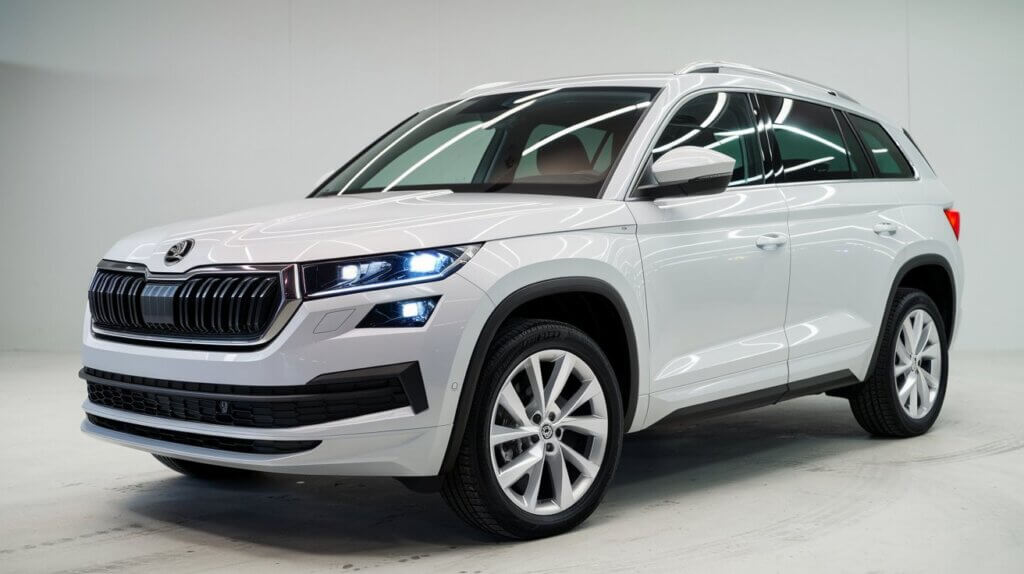
Material quality and perceived refinement have taken a substantial step forward, narrowing the gap between mainstream and premium competitors. Road and wind noise suppression is particularly impressive, creating a serene environment even at highway speeds—crucial for family road trips.
Where Improvement Is Needed
While the Kodiaq represents a comprehensive improvement over its predecessor, several areas still leave room for enhancement. The third-row seats, though improved, remain best suited for children or shorter adults on brief journeys. Access requires some agility despite the improved door aperture.
The plug-in hybrid variant, while impressive in efficiency, adds considerable weight that occasionally becomes noticeable during dynamic driving. The regenerative braking system, though improved, still lacks the natural progressive feel of conventional brakes in certain scenarios.
Some interior materials in lower zones—particularly on base models—reveal cost-cutting with hard plastics that seem at odds with the otherwise premium ambiance. Similar compromises appear in the simplified rear suspension design on front-wheel-drive variants, which can occasionally deliver a less composed ride over complex road surfaces compared to AWD models.
Finally, while Škoda’s infotainment system has improved dramatically, occasional lag still occurs when rapidly switching between functions, and some menu structures require more steps than seemingly necessary to access commonly used features.
Conclusion: The Evolved Family SUV
The 2025 Škoda Kodiaq represents a thoughtful evolution that addresses the changing needs of family SUV buyers. By embracing electrification while doubling down on practical versatility, Škoda has created a compelling package that balances innovation with functionality.
What impresses most isn’t any single headline feature but rather how cohesively the entire package comes together. From the enhanced interior space to the refined driving experience, from the improved technology integration to the clever practical touches, the Kodiaq feels like a product designed by people who understand family life rather than merely targeting a market segment.
The ideal Kodiaq customer is likely a modern family prioritizing space and versatility without wanting to compromise on technology or efficiency. The plug-in hybrid variant particularly appeals to environmentally conscious buyers who still need the flexibility of longer-range travel capability that pure electric vehicles might not yet offer.
In a market segment crowded with competent but often uninspiring options, the new Kodiaq manages to inject character and thoughtful innovation while maintaining the pragmatic values that made its predecessor successful. It may not be the flashiest or most exciting SUV available, but it might well be among the most thoroughly considered—and for family buyers, that thoughtfulness may prove more valuable than superficial excitement.
FAQ: 2025 Škoda Kodiaq
When exactly will the 2025 Škoda Kodiaq be available in dealerships?
The 2025 Škoda Kodiaq began production in late 2024 and is already available in most European markets as of early 2025. North American availability remains unconfirmed, though Škoda has expressed interest in expanding to select US markets with this model generation. Asia-Pacific markets will see staggered availability throughout the first half of 2025, with Australia scheduled to receive the first shipments in March 2025. Potential buyers should contact local dealerships for specific regional timing, as global supply chain challenges may affect distribution schedules in certain markets.
How does the new plug-in hybrid system work in daily driving?
The plug-in hybrid system prioritizes electric driving whenever sufficient battery charge is available. During typical daily use, the vehicle starts in electric mode and maintains this operation until either the battery depletes or the driver demands power beyond what the electric motor can provide. The transition between electric and hybrid operation occurs seamlessly with minimal disruption. Drivers can select from several operation modes: E-mode (prioritizing electric power), Hybrid (optimizing efficiency), and Battery Hold (preserving charge for later use). The regenerative braking system recovers energy during deceleration, though it’s less aggressive than in pure electric vehicles, offering a more familiar driving experience for those transitioning from conventional powertrains.
sion regulations tighten in many markets.
